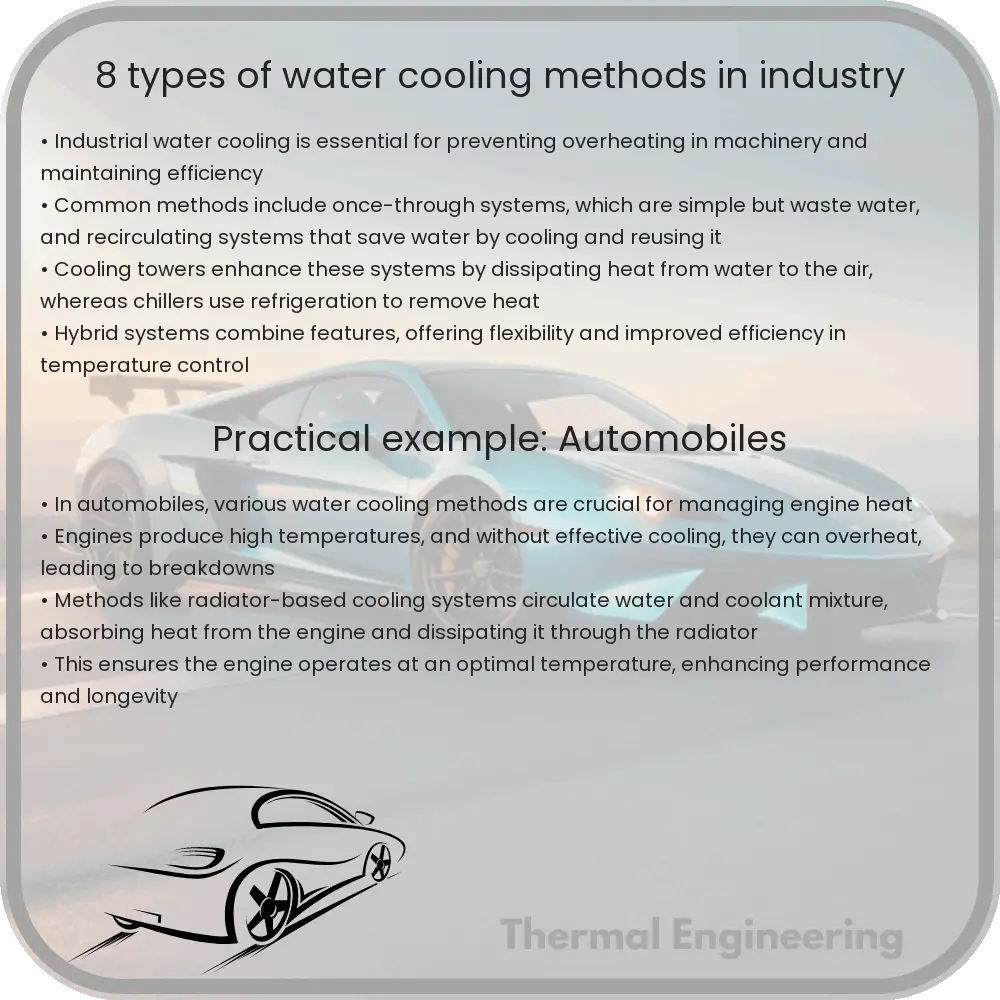Understand the various industrial water cooling methods, their applications, and benefits, from cooling towers to dry coolers.

8 Types of Water Cooling Methods in Industry
Water cooling is an essential part of many industrial processes, where control of temperature is crucial for efficiency and safety. Below are eight common water cooling methods used across various industries, each with specific advantages and applications.
1. Cooling Towers
Cooling towers are structures designed to cool water through direct contact with air. As hot water is sprayed into the tower, a part of the water evaporates, removing heat from the remaining water. Cooling towers are widely used in HVAC systems, power plants, and processing facilities.
2. Evaporative Condensers
Evaporative condensers combine the features of a condenser and a cooling tower. They use the evaporation of water to remove excess heat from a refrigerant gas. This method is particularly effective in space-saving as it combines two heat exchange processes.
3. Chilled Water Systems
Chilled water systems use refrigerant to cool down water to low temperatures. The chilled water is then circulated through a heat exchanger where it absorbs heat from the process load. This method is ideal for applications requiring stable and controlled temperatures.
4. Plate Heat Exchangers
Plate heat exchangers consist of corrugated plates assembled into a frame, creating a series of channels for hot and cold fluids to flow and exchange heat. This method offers high heat transfer efficiency and is commonly used in dairy, beverage, and chemical industries.
5. Shell and Tube Heat Exchangers
As the name suggests, these exchangers consist of a shell with a bundle of tubes inside. One fluid flows through the tubes while the other fluid flows outside the tubes but inside the shell. This design is versatile and widely used in petroleum refineries, chemical processes, and power stations.
6. Open Loop Systems
Open loop systems directly use river, lake, or sea water to absorb heat from industrial processes. After use, the water is returned to its source. While simple and cost-effective, this method can have environmental impacts and is dependent on local water availability.
7. Closed Loop Systems
In closed loop systems, cooling water is circulated within a contained system, not exposed to the external environment. This reduces water contamination and loss. Closed loops are typically used in situations where water conservation is important or where water quality cannot be compromised.
8. Dry Coolers
Dry coolers function similarly to air-cooled condensers, using air to remove heat from the water. Unlike cooling towers, no evaporation occurs, so water loss is minimal. Dry coolers are ideal for climates where water resources are scarce or in applications where water quality must be maintained.
Each of these water cooling methods offers specific advantages and may be preferred in different circumstances based on factors like environmental conditions, space availability, and energy efficiency requirements. Understanding these methods assists industry professionals in choosing the most appropriate cooling solution for their specific needs.